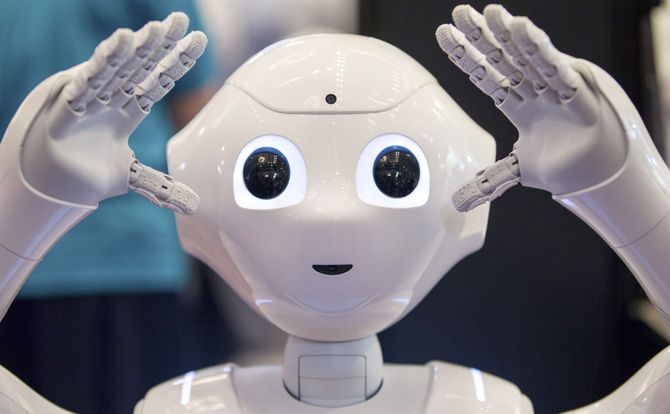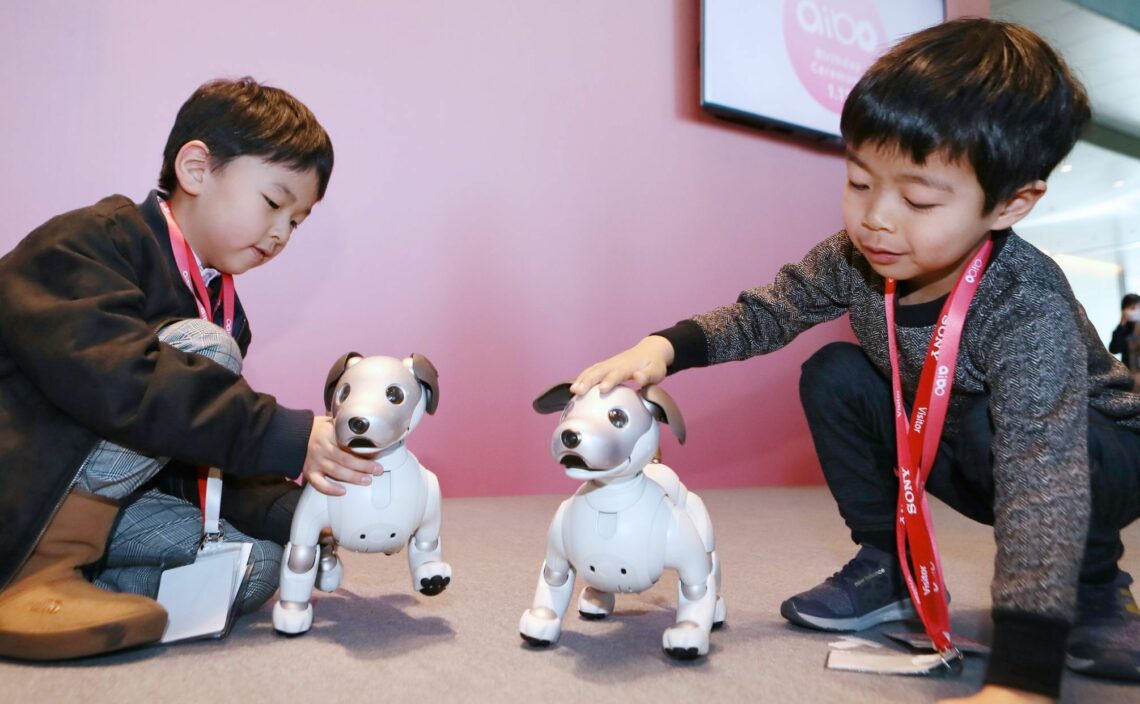The dawn of a new age in Japan
Japan tends to develop in leaps and bounds – and it looks ready to make another such surge. The transformation of life sciences, Internet of Things, artificial intelligence, robotics and big data will lead to a new age in the country. It has the political will and fewer of the legal hurdles for scientific research than in the West.

In a nutshell
- Japan tends to make social and economic advancements in huge leaps, and it is due for a new one
- The country wants to focus on life sciences, IoT, robotics, AI and big data.
- Cultural factors make it likely to succeed
Japan’s socioeconomic and cultural development tends to happen in leaps and bounds. Today, the country is once again at the dawn of a new age: the transformation of life sciences, the Internet of Things (IoT), artificial intelligence (AI), robotics and big data.
Japan’s track record in these areas has been mixed, with a traditional strength in robotics but weaknesses in AI and big data. Prime Minister Shinzo Abe has made them a focus of his economic agenda, and they will all benefit from cross-fertilization. Cultural factors unique to Japan should also play an important role in developing these technologies, giving the country several advantages over its competitors.
Open to change
The recent history of Japan has been marked by two major leaps in its social, economic and political modernization, beginning with the Meiji Restoration during the last third of the 19th century.
At the time, Japanese elites watched the seemingly relentless progress of Western imperial powers in conquering Asia. The United Kingdom had colonized the once-mighty India, and with the takeover of Hong Kong and the establishment of so-called concessions, it humiliated the Middle Kingdom. The European powers had divided Southeast Asia among themselves. At the turn of the century there was talk of partitioning China as they had done in Africa.
The Japanese elite realized that the only way to successfully resist this Western onslaught was to imitate the West.
By the second half of the 19th century, the United States was also throwing its weight around. The “black ships” appeared near the shores of Japan and the U.S., like the European powers, demanded that Japan open itself to foreign trade and investment.
The Japanese elite realized that the only way to successfully resist this Western onslaught was to imitate the West. For various reasons, Asia had missed the boat on the Industrial Revolution. The massive expansion of the British Empire was made possible by the dramatic and far-reaching modernization of its economy and, most notably, by historic industrial innovations.
During the Meiji Restoration Japan made the quantum leap from an agrarian, medieval and backward country, closed off from the world, to a modern industrial nation. Japan did in half a generation what had taken centuries elsewhere. The key to the lasting success of the Meiji Restoration was that the country not only modernized its economy but its political and legal institutions and indeed its entire civilization.
The second Japanese quantum leap was its transformation into a global leader in economic growth, industrial development, innovation and product quality. After the disaster of World War II, Japan essentially had to restart its economy from scratch. At first Japanese products were simple, cheap and of poor quality. But beginning in the 1970s, “Japan Inc.” leaped to the top of industrialized nations, as Japanese products and services became the gold standard. Western industries started to adopt Japanese production and management methods, and fears emerged that Japan would become an industrial superpower and dominate several vital technology fields.

These two leaps – the Meiji Restoration and the postwar economic miracle – demonstrate the absence of mental barriers in Japan and a promise of what the future might bring. Technological and industrial progress does not happen in a vacuum. History is full of examples where modernization was derailed because the necessary reforms were not compatible with the customs, traditions and spirit of the society.
Japan has repeatedly shown that it can succeed in a new environment not of its own making. The country’s unusual ability to modernize while still preserving its distinct cultural identity will be vital for confronting the coming challenges.
New priorities
While Japan has traditionally placed a high value on frugality and discipline, which encourage a competitive drive, the country is not immune to complacency. This is reflected in a strong tendency toward conservatism and keeping things as they are.
At the end of 1989, the speculative bubble that had driven the Nikkei stock index to historic levels began to burst, and Japan entered a period of prolonged low growth and stagnation. While things were never as bad as they were described in the Western media, and while most countries would have been satisfied with Japan’s economic conditions even during this period, the country has now clearly reached a point of departure for a new modernization effort.
When Mr. Abe became prime minister for the second time at the end of 2012, he launched several bold reforms known as “Abenomics.” Most attention was given to economic policy, but the agenda also imagined structural reforms. The idea is to reinvigorate the innovative capacity of the country and inject a dose of creativity in five focus areas: life sciences, IoT, robotics, AI and big data.
Japan not only has a rapidly aging society, but also imposes restrictive immigration policies.
To some extent these reforms are motivated by Japan’s rapidly aging and shrinking population, which cannot be addressed solely by conventional economic policies. Domestic markets are shrinking, and the labor market is tightening, especially for skilled labor in the health and service sectors.
Japan is already a leader in robotics and cyborgs (humans with mechanical parts), due partly to a penchant for applying new technologies very early in the innovation process. Frequently, this is done in a playful manner: the world marvels at robots that can climb stairs or play musical instruments. These playful applications are not ends in themselves, but stages of technological development that are ultimately aimed at advances in sectors like health, transport and services.
More creativity
In big data, IoT and AI, Japan lags behind the U.S., arguably due to a lack of creativity. When it comes to products and services, Japan is remarkably innovative. In fact, it is the global leader in services innovation. But innovation is based on improving existing products and services and is in many ways a linear process.
Creativity, on the other hand, implies a radical break – a completely new approach to existing products and services. The lack of creativity in Japan is largely due to deficiencies in its education system, which does not encourage students to tread new paths. Many Japanese experts have recognized this deficit and are concerned that it impedes the cross-pollination between robotics, AI and IoT.
There is also the question of demographics. Japan not only has a rapidly aging society, which by itself tends to strengthen a certain conservative attitude, but also imposes restrictive immigration policies. Although the country suffers from a growing labor shortage, particularly in health care and construction, it is very reluctant to let in foreigners. This might enhance national cohesion, which is an important part of the unique Japanese social contract. But it also stifles the kind of creativity that comes from diversity.
Clearing the way
Mr. Abe has made it clear that he wants Japan to become a global leader in life sciences. This implies not only the availability of financial backing and a highly trained workforce, but the necessary legal framework. Mr. Abe wants to amend or abolish any laws that put obstacles in the way of advancement in life sciences.
One cultural comparison suggests that he will be successful. In many European societies, the research required to develop life sciences is hampered by legal obstacles, and there are popular movements aimed at restricting the scope of scientific experimentation and the use of animal testing. Japan’s advantage here is that its religious and ethical environments are more flexible on these issues; Shintoism does not abide by the prescripts that can impede scientific research elsewhere.
Already, Japan has emerged from a rather restrictive environment and made the country more attractive to foreign companies.
Already, Japan has emerged from a rather restrictive environment and made the country more attractive to foreign companies. As part of Abenomics, Japan opened its doors to foreign investments in pharmaceuticals, medical devices, health-care services and regenerative medicines. The country has made favorable changes to health-related laws and regulations, and has established National Strategic Special Zones, which offer eased regulations and tax benefits. These zones will encourage the creation of innovative drugs and provide faster approval of licensing deals and partnerships with local firms.
Later this year, the government also intends to remove a ban on creating human organs inside the bodies of animals, which would remove a significant hurdle in the way of some ambitious research. And more pharmaceutical and health-care companies are investing and starting new ventures in Japan, which is highly advanced in the medical and social fields that are important to an aging society.
Promising scenarios
Given its socioeconomic and cultural background, Japan has good prospects to succeed in the age of robotics, AI and other new technologies. Many of the barriers to innovation that exist elsewhere, whether in the West or in the Islamic world, are absent in Japan. One advantage is the cohesiveness of Japanese society, which is relatively homogeneous in terms of ethnicity, religion and culture. Moreover, part of the tradition of Japanese development is that once a decision has been made, the people fall in line, whether or not they agree.
Japan must also deal with the changing geopolitical environment, which seems to be heading toward a renewed Chinese hegemony and an increasingly unreliable U.S. IoT will reduce Japan’s dependence on imports, and AI will give a new lift to the IT industry, where Japanese leaders such as SoftBank or Panasonic are working to catch up with the newest technologies.
Most importantly, the unavoidable aging of the Japanese population leaves the country with no other option than to engage substantially in robotics. Life sciences can enhance the quality of life for an increasingly elderly population and will also help deal with current demographic trends that do not remotely guarantee a stable population. If immigration is an unacceptable solution, technology may be the only way to compensate for the shrinking number of conventional births.







